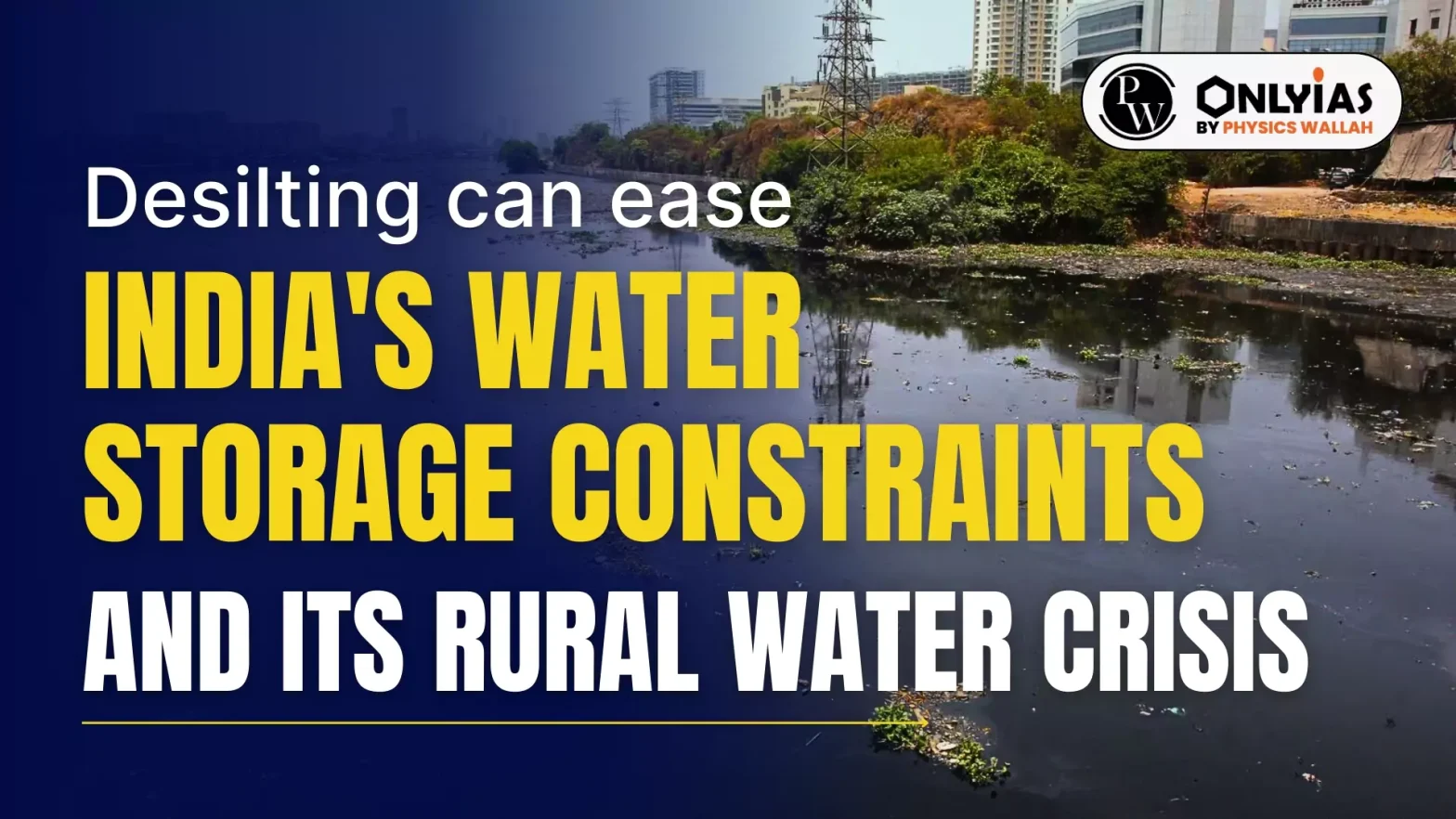India is facing an increasingly severe water crisis exacerbated by climate change and unsustainable practices. Over the past 25 years, drought-prone regions in India have expanded by more than 50%, with increasing drought frequency due to climate change. In the last decade, every third Indian district has experienced more than four droughts. With nearly half of the population dependent on rain-fed agriculture, vulnerability to changing weather patterns is rising, potentially leading to a major crisis in the future. It is imperative to act now to mitigate these risks.
Importance of Water Storage and Groundwater Replenishment
Historically, civilizations have settled near water sources, with water playing a central role in survival and even leading to conflicts and wars over their usage. Therefore, conserving water is crucial, requiring a focus on two main aspects:
- Water Storage: Just as we save money in banks, it is equally important to store water. The Prime Minister’s proposal to “catch the rain—where it falls, when it falls” has led to initiatives like the Amrit Sarovar project, which aims to build or revive 75 ponds per district, totaling 50,000 water bodies across the country. This effort also encourages community involvement in managing water resources.
- Community-Centric Models: In the past, communities took responsibility for managing their local water bodies, which were vital throughout the year, especially in villages. Some of these water bodies also helped recharge groundwater. However, over time, community-led initiatives have declined, leaving everything to the government for conservation and rejuvenation initiatives. Reviving the tradition of community-led water management is crucial for achieving long-term sustainability.
Enroll now for UPSC Online Classes
Reviving Silted Water Bodies
Siltation occurs when fertile topsoil is eroded by heavy rains and accumulates in water bodies. This reduces their storage capacity and water quality. This process not only diminishes the availability of water for agricultural and personal use but also degrades soil quality, leading to lower agricultural productivity. In drought-prone regions, siltation exacerbates water scarcity, creating a vicious cycle that undermines rural livelihoods.
- Ministry of Jal Shakti’s Water Body Census: The Ministry of Jal Shakti’s first-ever Water Body Census identified over 2.3 million rural water bodies, many of which are affected by siltation. By prioritizing the desilting of larger water bodies, especially in drought-stricken areas, water security can be enhanced for millions at a relatively low cost.
- Involvement of Community in Desilting: Engaging the community in desilting water bodies like rivers and ponds offers a practical solution to tackle water scarcity and improve agricultural productivity. The fertile silt removed during desilting can be used by farmers to enrich their fields, enhancing crop yields while restoring the water storage capacity of these bodies. Collaboration between the government and local communities is essential for the success of this approach, with the government providing financial support for the desilting process and assisting with the transportation of silt to farmlands.
- Collaborative Water Revitalization: Strategic government schemes, community involvement, and appropriate funding could potentially revive over 200,000 water bodies, benefiting more than 300 million citizens. This approach does not require excessive financial resources but depends on effective collaboration between the community and the government.
- Niti Aayog Initiative: Niti Aayog’s Aspirational District Programme in six states highlights the potential of community involvement in desilting processes. In this initiative, the government funded the excavation of silt from water bodies, while farmers covered the transportation costs. A foundation dedicated to water security supported the process by building an open technology platform to monitor progress and funding local NGOs to generate community demand for silt.
- Case Study: Chhatarpur, Madhya Pradesh: The drought-prone district of Chhatarpur in Bundelkhand offers a compelling example of the impact of community-centric water management. In 2022, Niti Aayog’s efforts to rejuvenate 164 water bodies resulted in additional storage for 1.5 million litres of water, benefiting 270,000 people across 182 villages. Farmers in the area observed significant improvements in water levels and crop yields. For instance, a farmer who used 90 loads of silt from a cleaned pond on his one-acre farm saw his income double with better harvests of tomatoes and chilies. This success story underscores the potential of similar projects to transform water-scarce regions across India.
Other Success Stories
- Maharashtra’s Gal Mukt Dharan
- Gujarat’s Sujalam Sufalam Jal Abhiyan
|
Conclusion
The rejuvenation of silted water bodies is a viable and cost-effective solution to India’s escalating water crisis. By enhancing water storage, replenishing groundwater, and improving soil fertility, desilting initiatives can play a crucial role in ensuring water security, boosting agricultural productivity, and fostering rural development. However, these efforts must be community-driven, not just government-led, to ensure lasting effectiveness. Collaborative action among all stakeholders is essential to creating a sustainable and thriving rural India, capable of meeting the challenges of water scarcity and climate change.
Check Out UPSC NCERT Textbooks From PW Store
![]() 3 Sep 2024
3 Sep 2024

